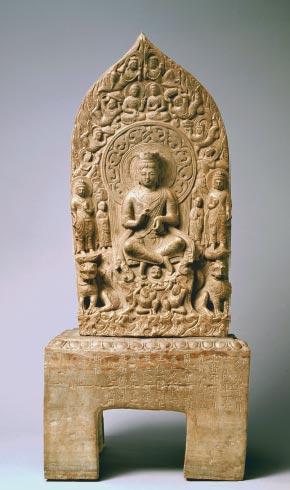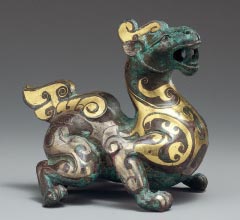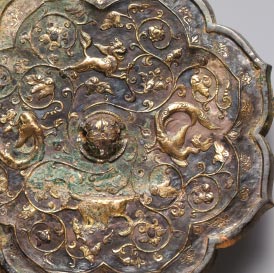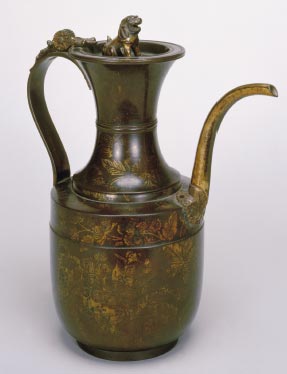Lions were
introduced to China in the Han dynasty (206 B.C.–220 A.D.) and came
to be regarded as sacred ancient beasts, like dragons and phoenixes.
Later, the bixie—a mythological horned lion-like beast—appeared.
During the Southern and Northern dynasties (5th–6th century), when
Buddhism became popular, lions guarding the Buddha’s dais were
introduced from the West and mythical horned lion-like creatures
emerged as tomb figurines. During the Tang dynasty (618–907), lions
playing in palmettes were introduced from the West as a symbol that
connected heaven and earth. These motifs could be seen on the
backside of bronze mirrors. Some mirrors also have designs with
phoenixes and Pegasuses or horned and hornless lions.




It is not clear exactly how such phenomena are related to the
pairing of the horned komainu and hornless shishi as mythical beasts
in Japan. However, we can confirm the pairing of lions guarding
images of the historic Buddha from the Hakuhō period (ca. 645–710)
and the replacement of the palmette motif with the Chinese design of
auspicious floral arabesques. The motif of lions playing in peonies
and arabesques appeared in China during the Song dynasty (960–1127)
and was introduced to Japan in the Kamakura period (1185–1333).
Since then, the iconography of lions and peonies has long become a
familiar theme in Japan.



